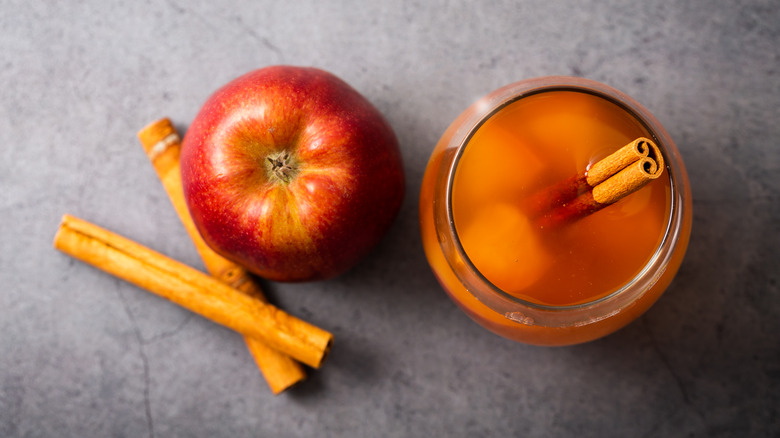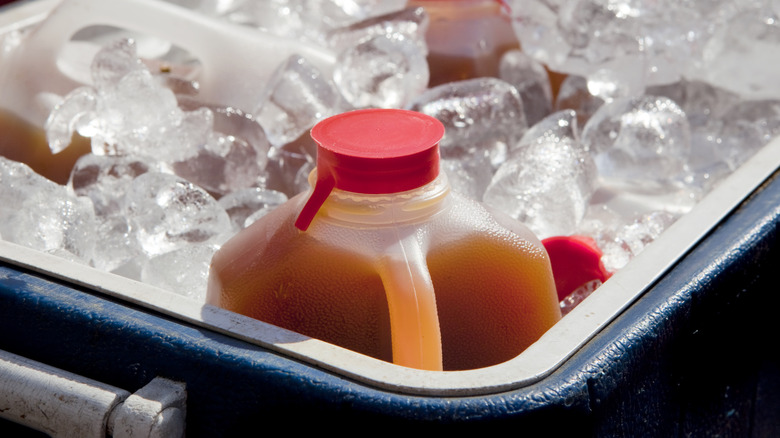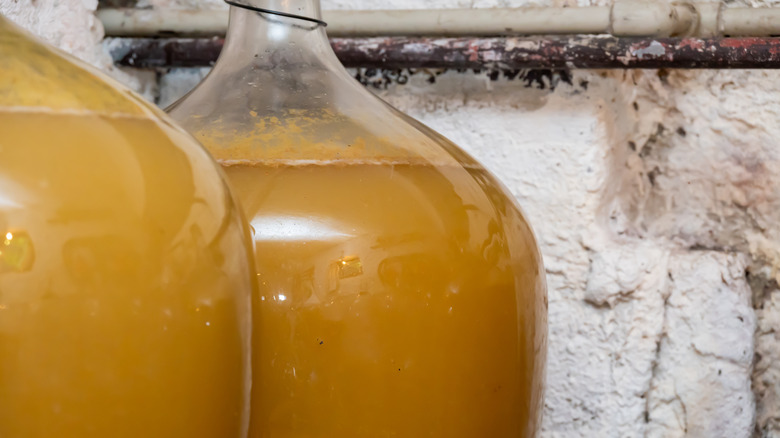How Long Does Apple Cider Stay Good For After Opening?
Popping open a fresh gallon of apple cider has got to be one of the best parts of fall (along with obsessing over everything pumpkin and getting your friends and family together for some autumnal cooking). Cold, it's as refreshing and sweet as water from a spring, and hot, it's like a warm hug on a chilly night. But once you've opened your cider, how long do you have to drink it all?
It depends on whether or not your apple cider is pasteurized or unpasteurized. Pasteurized cider (the kind most commonly sold in the U.S.) is good for up to 10 days if stored properly in the refrigerator. Unpasteurized apple cider, on the other hand, is only good for up to three days, and it should be kept refrigerated, even when unopened. (Note that unpasteurized cider comes with its own set of warnings.) And while it's true that bulging packaging in many food and beverage items indicates spoilage, that isn't necessarily the case with unpasteurized apple cider (but more on the signs of spoilage later).
Tips for storing apple cider
The key to getting the most time out of your apple cider is to make sure that you're storing it properly, which means putting the lid on securely every time it goes back into the fridge to keep outside bacteria from getting in. You should also be keeping it off the door, if possible, as temperature fluctuations (which will happen every time the fridge door is opened) can affect the quality of the cider, too. As tempting as it is, as well, to swig right from the container, doing so can introduce bacteria that could turn your cider faster (to say nothing of giving other family members any sickness you might have).
If it's been well over a week since you opened your cider and you're not sure you'll finish it, you can actually freeze it and save it for later (up to a year later, to be exact), as long as it's in an airtight container. You might want to think ahead by measuring it out into single servings before freezing, too, so that you don't have to thaw all of it at once. Speaking of thawing, that's best done in the fridge overnight, and you have up to five days to finish the apple cider from that point.
Signs of turning in apple cider
Apple cider doesn't necessarily spoil, the way meats or vegetables do, but it can take a turn for the worse and end up so that you don't want to drink it, even if you technically still can. One of the first signs that your cider has started to turn is the color might darken from its normal, medium brown to a deeper shade. It can also develop an unpleasant aroma; if you open your cider and it smells anything but sweet and fresh, you should probably pour it down the drain.
Your cider could also develop a thin membrane on its surface or even a foam, which is a sign that it's past its prime. Finally, if it looks and smells okay, but you taste it and it's awfully acidic, or even tastes vaguely alcoholic, it means the yeast microbes have been eating the sugar — basically, your apple cider is fermenting. Again, it's not technically unsafe to drink at this point, but it's also not particularly palatable.


